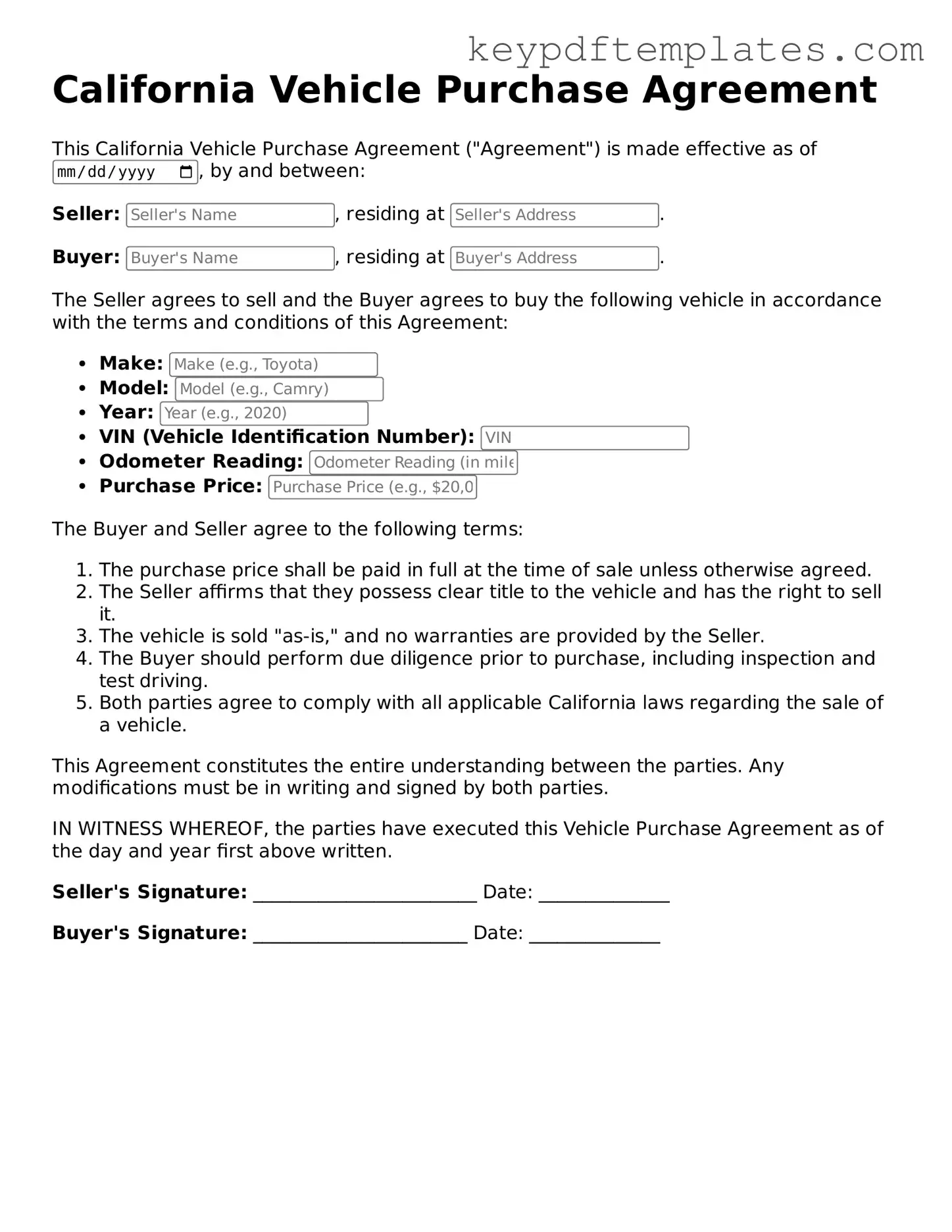Legal Vehicle Purchase Agreement Document for the State of California
The California Vehicle Purchase Agreement form is a crucial document used in the sale of vehicles within the state. It outlines the terms and conditions agreed upon by both the buyer and the seller, ensuring a clear understanding of the transaction. This form serves to protect the rights of both parties, providing a legal framework for the sale process.
Modify Document Online
